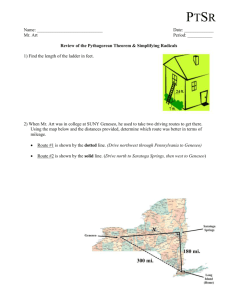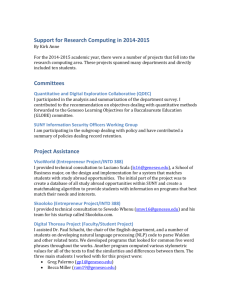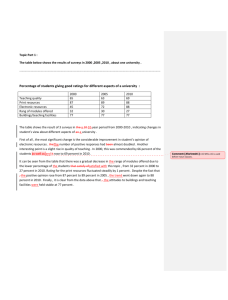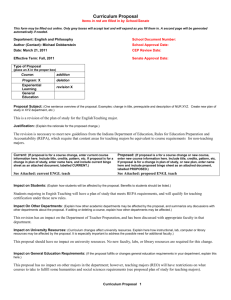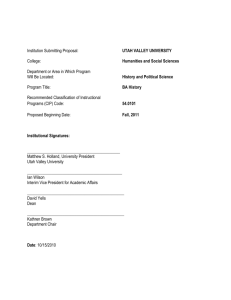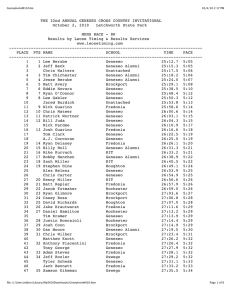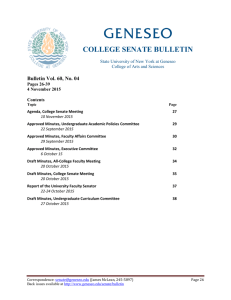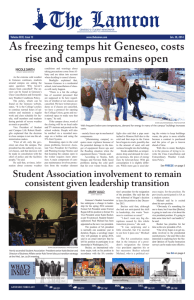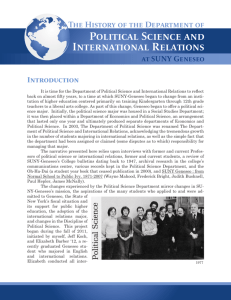CASE STUDY: STATE UNIVERSITY OF NEW YORK AT GENESEO
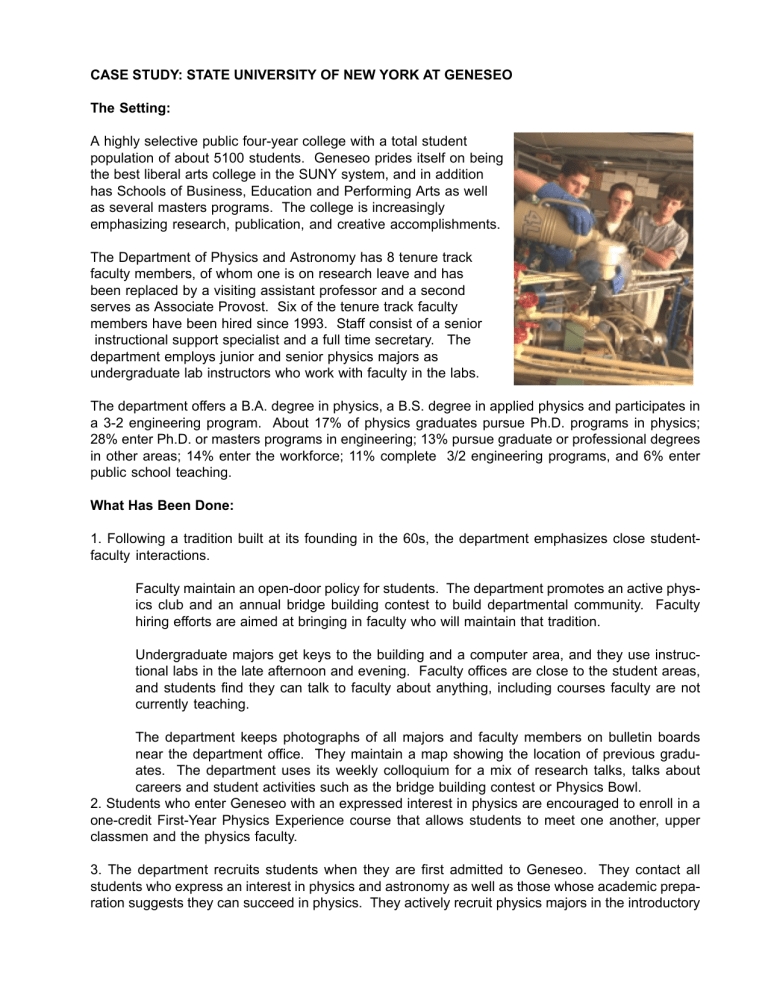
CASE STUDY: STATE UNIVERSITY OF NEW YORK AT GENESEO
The Setting:
A highly selective public four-year college with a total student population of about 5100 students. Geneseo prides itself on being the best liberal arts college in the SUNY system, and in addition has Schools of Business, Education and Performing Arts as well as several masters programs. The college is increasingly emphasizing research, publication, and creative accomplishments.
The Department of Physics and Astronomy has 8 tenure track faculty members, of whom one is on research leave and has been replaced by a visiting assistant professor and a second serves as Associate Provost. Six of the tenure track faculty members have been hired since 1993. Staff consist of a senior
instructional support specialist and a full time secretary. The department employs junior and senior physics majors as undergraduate lab instructors who work with faculty in the labs.
The department offers a B.A. degree in physics, a B.S. degree in applied physics and participates in a 3-2 engineering program. About 17% of physics graduates pursue Ph.D. programs in physics;
28% enter Ph.D. or masters programs in engineering; 13% pursue graduate or professional degrees in other areas; 14% enter the workforce; 11% complete 3/2 engineering programs, and 6% enter public school teaching.
What Has Been Done:
1. Following a tradition built at its founding in the 60s, the department emphasizes close studentfaculty interactions.
Faculty maintain an open-door policy for students. The department promotes an active physics club and an annual bridge building contest to build departmental community. Faculty hiring efforts are aimed at bringing in faculty who will maintain that tradition.
Undergraduate majors get keys to the building and a computer area, and they use instructional labs in the late afternoon and evening. Faculty offices are close to the student areas, and students find they can talk to faculty about anything, including courses faculty are not currently teaching.
The department keeps photographs of all majors and faculty members on bulletin boards near the department office. They maintain a map showing the location of previous graduates. The department uses its weekly colloquium for a mix of research talks, talks about careers and student activities such as the bridge building contest or Physics Bowl.
2. Students who enter Geneseo with an expressed interest in physics are encouraged to enroll in a one-credit First-Year Physics Experience course that allows students to meet one another, upper classmen and the physics faculty.
3. The department recruits students when they are first admitted to Geneseo. They contact all students who express an interest in physics and astronomy as well as those whose academic preparation suggests they can succeed in physics. They actively recruit physics majors in the introductory
course. About 40 students a year express interest in the 3-2 engineering program, and many of them convert to physics majors.
4. The B.A. in physics has minimum requirements allowing flexibility. Most students take more physics than the minimum requirement, and the B.S. in applied physics requires more courses including electronics and computer science.
5. Well over half the physics majors have a summer
research experience either at Geneseo or in an off-campus research program.
Six of the current faculty members have externally funded research projects. The Department uses its 2 MeV
Van de Graff accelerator to calibrate detectors for laser fusion
efforts at the University of Rochester and Lawrence
Livermore National Laboratory.
6. The department works to extend the feeling of community to students in service courses.
Faculty take pictures of all students during the first week of classes and learn all names within a week or so.
Indicators of Success:
1. In the last 9 years, the department has graduated an average of 17 physics majors per year of whom 22% were women and 4%, minorities. There are currently 76 declared majors in all four years.
2. From their freshman years on, students express a strong sense of belonging to the physics department. They use the word “family” to describe their experience. They are aware of anecdotes about past students and events.
3. The department has the reputation of being a challenging but friendly department that provides a high quality academic program.
4. The administration holds the department in high regard because of their devotion to teaching and time spent involving students in research.
Keys to Making the Changes:
1. The physics department has a strong and clear sense of its mission that is shared by all faculty members within the department.
2. Communication among faculty members has high priority. Physics faculty members have lunch every week which allows the faculty members to communicate informally. In addition, they have a formal faculty meeting once a week. Generally important decisions require much discussion and are resolved by consensus.
3. The department has had strong leadership from chairs who have been able to form a consensus on the mission and direction of the department.
4. The entire department has worked to recruit faculty members who will support the department’s mission and to keep them. The chair chats with them informally but regularly as they become part of the physics “family”.
5. The college also works to integrate junior faculty into the larger community through putting them on committees in their second years and through a Teaching/Learning Center.
6. The administration provides strong institutional support for the mission of the department which fits well into the overall mission of Geneseo.
For More Information Contact:
Kurt Fletcher, Chair, Department of Physics and Astronomy, SUNY Geneseo, 1 College Circle,
Geneseo, NY 14454; phone 716-245-5281 (fletcher@geneseo.edu)
